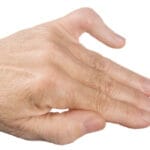Arm pain can result from a variety of causes, such as overuse, injury, or underlying conditions like arthritis. For many, managing arm pain at home is the first step toward relief, and there are numerous techniques available to alleviate discomfort without the need for medication. This article explores some of the most effective home remedies and strategies for reducing arm pain naturally.
Cold and Heat Therapy
- Cold Therapy: Applying ice to the affected area for 15-20 minutes every few hours can help reduce swelling and numb the pain, especially in the first 48 hours following an injury.
- Heat Therapy: After the initial swelling subsides, heat can help relax tight muscles and improve blood circulation. Use a heating pad or warm compress for 15-20 minutes to relieve tension and stiffness.
Gentle Stretching and Exercise
- Stretching can improve flexibility and reduce stiffness, particularly if arm pain is due to muscle strain or overuse. Gentle exercises like arm rotations, wrist flexes, and shoulder shrugs can help maintain mobility and prevent further injury.
- Incorporate exercises that strengthen the surrounding muscles, which can help support the arm and reduce pain in the long run.
Massage Therapy
- Gently massaging the affected area can help increase blood flow and relieve muscle tension. Techniques like self-myofascial release, where you apply pressure to trigger points, can be especially effective for muscle-related pain.
- You can also use essential oils like peppermint or eucalyptus for added anti-inflammatory benefits during massage sessions.
Topical Analgesics
- Creams containing ingredients like menthol, capsaicin, or diclofenac can provide temporary pain relief. These are especially helpful for mild to moderate pain in the muscles or joints.
- Be sure to follow application instructions and avoid broken skin.
Ergonomic Adjustments
- Poor posture and repetitive strain can contribute to arm pain. Adjusting your workstation to be more ergonomic can help prevent strain on your arms, wrists, and shoulders.
- If you spend long hours at a desk, take regular breaks and make sure your chair, keyboard, and screen are at the correct height to reduce stress on your arms.
Lifestyle Modifications
- Overuse is a common cause of arm pain. Resting the affected arm and avoiding activities that aggravate the pain is essential for healing. However, complete immobilization can lead to stiffness, so gentle movement is recommended after the acute phase.
- Maintaining a healthy diet rich in anti-inflammatory foods such as leafy greens, nuts, and fatty fish can also support recovery by reducing systemic inflammation.
Home Remedies
- Turmeric: Known for its anti-inflammatory properties, turmeric can be applied topically in a paste or consumed in warm milk for pain relief.
- Ginger: Like turmeric, ginger is a natural anti-inflammatory agent. You can use ginger compresses or add it to your diet to help with swelling and pain.
Compression and Elevation
- Compression wraps can help control swelling and provide support to the injured area. Elevating the arm above heart level, particularly at night, helps reduce inflammation and swelling.
Mind-Body Techniques
- Practices like yoga, meditation, and deep breathing can help manage chronic pain by calming the nervous system. Mindfulness techniques can also shift your focus away from the pain, making it more manageable over time.
Frequently Asked Questions
How long should I rest my arm after an injury?
Resting is crucial, but complete immobilization for too long can lead to stiffness. Typically, resting for 24-48 hours is sufficient for mild strains. Gradually reintroduce movement to prevent stiffness.
When should I see a doctor for arm pain?
If your arm pain persists despite home remedies, or if you experience severe swelling, weakness, numbness, or inability to move the arm, you should seek medical attention. These could be signs of a more serious underlying condition.
Can poor posture cause arm pain?
Yes, poor posture can contribute to muscle strain and joint pain in the arms, particularly if you work at a desk for extended periods. Ergonomic adjustments can significantly reduce this strain.
What is the difference between heat and cold therapy?
Cold therapy is typically used immediately after an injury to reduce swelling and numb pain. Heat therapy, on the other hand, is beneficial for relaxing muscles and improving blood circulation once the initial inflammation has subsided.
Are there any specific exercises that help relieve arm pain?
Yes, exercises such as gentle arm rotations, wrist flexions, and shoulder stretches can help relieve tension and improve flexibility. Always consult with a healthcare professional or physical therapist before starting any new exercise regimen.
Conclusion
Arm pain can significantly impact daily activities, but there are numerous effective techniques for relieving it at home. Combining cold and heat therapy, stretching, massage, and ergonomic adjustments can lead to significant improvements. In cases of chronic pain or injuries that don’t improve with at-home treatment, seeking professional medical advice is crucial for proper diagnosis and care.





